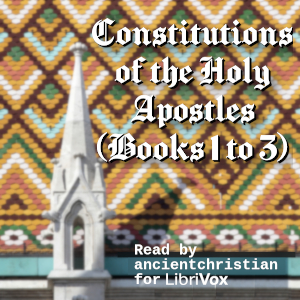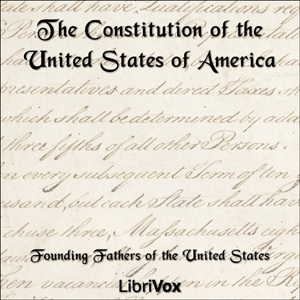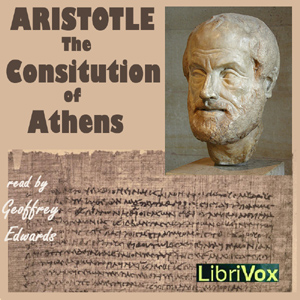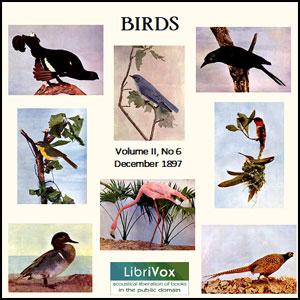Consuelo
This roman ? clef follows the musical adventures of Consuelo, a gifted singer under the tutelage of the composer Nicola Porpora. After encountering betrayal in her home city of Venice, she goes to stay with a family of nobles in an isolated castle in Bohemia and teach singing to the baroness who lives there. It is there that she meets Count Albert, a troubled young man who experiences regressions to past lives. He is strangely drawn to her, but she, though moved with pity for him, is unsure what to think of him. She then sets out for Vienna to meet with Porpora again and on the way befriends a young Joseph Haydn. The two do their best to skirt intrigue and peril during their journey while Consuelo engages in soul-searching to determine who Count Albert is to her. (Summary by Scarbo)
Constructive Conscious Control of the Individual
F. Matthias Alexander was an Australian actor, author and educator, who is best known as the inventor of Alexander Technique, a method for “unlearning” acquired habits of movement and posture that are harmful or suboptimal, and allowing natural, healthy patterns of body use to emerge in their place. Alexander Technique is now taught by specially trained instructors through in-person lessons around the world, and is particularly popular among musicians and other performance artists. In this 1923 book, considered by many to be his best, Alexander explains the principles of his technique and the theory behind it. It includes an introduction by the American philosopher and educator John Dewey, who studied the technique with Alexander. (Summary by Kazbek)
Constructive Beekeeping
The author explores the effects of condensation and evaporation as they relate to the success of a beehive. The results of various experiments and the author’s thoughts are given. (Summary by SoMDbeekeeper)
Constitutions of the Holy Apostles (Books 1 to 3)
The Apostolic Constitutions are made up of eight treatises on Early Christian discipline, worship, and doctrine, which was intended to act as a manual of guidance for the clergy, and laity. It claims to be composed by the Twelve Apostles who received these instructions from Jesus Christ, although most scholars believe it to be a 4th-century work. The structure of the work is as follows: Books 1 to 6 are a re-writing of the Didascalia Apostolorum. Book 7 is based largely on the Didache, with Chapters 33-45 containing prayers similar to existing Jewish ones. Book 8 has a treatise on charismata, along with, what are known as, the Canons of the Apostles. (Summarized from Wikipedia)
The Constitution of the United States of America, 1787
This 1787 document defines the rights and responsibilities of federal government of the United States of America.
The Constitution of Athens
The Constitution of Athens (Greek: ???????? ????????) was written by Aristotle or his student. The text was lost until discovered in the late 19th century in Egypt. Topics discussed include Solon’s legislative reforms abolishing debt slavery and the rise and decline of democracy and tyranny in Athens. (Summary by Geoffrey Edwards)
The Constant Lover
Sir John Suckling (1609-42) was one of the Cavalier poets at the court of King Charles I of England. He took up arms in the conflicts of that era but was said to be more fit for the boudoir than the battlefield. He was a prolific lover, a sparkling wit and an excessive gamester and is credited with inventing the card game, Cribbage. Cavalier poetry was witty, decorous and sometimes naughty. The Constant Lover displays these elements as well as Suckling’s conversational ease and charm.
The Constant Couple
George Farquhar, the author of this comedy, was the son of a clergyman in the north of Ireland. He was born in the year 1678, discovered an early taste for literature, and wrote poetic stanzas at ten years of age. In 1694 he was sent to Trinity College, Dublin, and there made such progress in his studies as to acquire considerable reputation. But he was volatile and poor?the first misfortune led him to expense; the second, to devise means how to support his extravagance. In the year 1700 he brought out this comedy of “The Constant Couple; or, A Trip to the Jubilee.” It was then the Jubilee year at Rome, and the author took advantage of that occurrence to render the title of his drama popular; for which cause alone it must be supposed he made any thing in his play refer to that festival, as no one material point is in any shape connected with it. – Summary by Mrs Inchbald, a critic of that time Cast list: Sir Harry Wildair: John Burlinson Alderman Smuggler: Kristin Gjerl?w Colonel Standard: ToddHW Clincher Junior: KHand Clincher Senior: K. Adrian Stroet Vizard: technoauloin Tom Errand: Dillon McFarlane Dicky: alanmapstone Constable: Newgatenovelist Servants: Anna Simon Lady Lurewell: Availle Lady Darling: Elizabeth Klett Angelica: Sonia Parly: Jacqui Castle Tom Errand’s Wife: Leanne Yau Mob: Sonia Stage Directions: Gaby Edited and Coordinated by: ToddHW
Constance Dunlap
Constance Dunlap is a young woman who in Chapter 1 turns amateur criminal in order to to save her husband from disgrace and imminent arrest. When this sadly doesn’t work out exactly as planned, Constance goes on to embrace a new life. More antiheroine than heroine, she uses her wits and new found talents to aid others in avoiding retribution for their crimes always one step ahead of the detective pursuing her. Summary by J. M. Smallheer
The Conspiracy of Pontiac and the Indian War after the Conquest of Canada
“The Conspiracy of Pontiac” was Parkman’s first history book and first published in 1851. It covers the Indian wars of 1763 to 1769. Pontiac, an Ottawa chief, put together a coalition of Indian tribes from around the Great Lakes region and the Illinois and Ohio Countries to attack the British under General Jeffrey Amherst. – Summary by Richard Carpenter
The Consoling Thoughts of Saint Francis de Sales
Francis de Sales (1567-1622) was a French priest and later bishop of Geneva who was revered as a master of spiritual direction and fondly remembered for his keen insights into the personal spiritual struggles of men and women of all faiths. His Introduction to the Devout Life, which he wrote especially for laypersons, and his Treatise on the Love of God remain fundamental reading for all earthly pilgrims who seek personal moral improvement and strive for spiritual perfection. Pere Huguet has gathered together in this one volume some of the more poignant insights and suggestions contained in the writings of Saint Francis de Sales and organized them under more than eighty chapters. They are sure to bring comfort to the weary and guidance to all of us who, from time to time, lose our way. (Introduction by dave7)
Birds, Vol. III, No 1, January 1898
Birds, Illustrated by Color Photography was a monthly publication of the Nature Study Publishing Company of Chicago. It includes short poems, anecdotes and factual descriptions of birds with accompanying color plates. The magazine was published from 1898-1907 under the various titles, “Birds,” “Birds and all Nature,” “Nature and Art” and “Birds and Nature.” Later issues were expanded to include animals, plants, etc. Summary by J. M. Smallheer
Birds, Vol. II, No 6, December 1897
Birds, Illustrated by Color Photography was a monthly publication of the Nature Study Publishing Company of Chicago. It includes short poems, anecdotes and factual descriptions of birds with accompanying color plates. The magazine was published from 1897-1907 under the various titles, “Birds,” “Birds and all Nature,” “Nature and Art” and “Birds and Nature.” Later issues were expanded to include animals, plants, etc. Summary by J. M. Smallheer
Birds, Vol. II, No 5, November 1897
Birds, Illustrated by Color Photography was a monthly publication of the Nature Study Publishing Company of Chicago. It includes short poems, anecdotes and factual descriptions of birds with accompanying color plates. The magazine was published from 1897-1907 under the various titles, “Birds,” “Birds and all Nature,” “Nature and Art” and “Birds and Nature.” Later issues were expanded to include animals, plants, etc. Summary by J. M. Smallheer
Birds, Vol. II, No 4, October 1897
Birds, Illustrated by Color Photography was a monthly publication of the Nature Study Publishing Company of Chicago. It includes short poems, anecdotes and factual descriptions of birds with accompanying color plates. The magazine was published from 1897-1907 under the various titles, “Birds,” “Birds and all Nature,” “Nature and Art” and “Birds and Nature.” Later issues were expanded to include animals, plants, etc. Summary by J. M. Smallheer
Birds, Vol. II, No 3, September 1897
Birds, Illustrated by Color Photography was a monthly publication of the Nature Study Publishing Company of Chicago. It includes short poems, anecdotes and factual descriptions of birds with accompanying color plates. The magazine was published from 1897-1907 under the various titles, “Birds,” “Birds and all Nature,” “Nature and Art” and “Birds and Nature.” Later issues were expanded to include animals, plants, etc. Summary by J. M. Smallheer
Birds, Vol. II, No 2, August 1897
Birds, Illustrated by Color Photography was a monthly publication of the Nature Study Publishing Company of Chicago. It includes short poems, anecdotes and factual descriptions of birds with accompanying color plates. The magazine was published from 1897-1907 under the various titles, “Birds,” “Birds and all Nature,” “Nature and Art” and “Birds and Nature.” Later issues were expanded to include animals, plants, etc. Summary by J. M. Smallheer
Birds, Vol. II, No 1, July 1897
Birds, Illustrated by Color Photography was a monthly publication of the Nature Study Publishing Company of Chicago. It includes short poems, anecdotes and factual descriptions of birds with accompanying color plates. The magazine was published from 1897-1907 under the various titles, “Birds,” “Birds and all Nature,” “Nature and Art” and “Birds and Nature.” Later issues were expanded to include animals, plants, etc. Summary by J. M. Smallheer
Birds, Vol. I, No 6, June 1897
Birds, Illustrated by Color Photography was a monthly publication of the Nature Study Publishing Company of Chicago. It includes short poems, anecdotes and factual descriptions of birds with accompanying color plates. The magazine was published from 1897-1907 under the various titles, “Birds,” “Birds and all Nature,” “Nature and Art” and “Birds and Nature.” Later issues were expanded to include animals, plants, etc. Summary by J. M. Smallheer
Birds, Vol. I, No 5, May 1897
Birds, Illustrated by Color Photography was a monthly publication of the Nature Study Publishing Company of Chicago. It includes short poems, anecdotes and factual descriptions of birds with accompanying color plates. The magazine was published from 1897-1907 under the various titles, “Birds,” “Birds and all Nature,” “Nature and Art” and “Birds and Nature.” Later issues were expanded to include animals, plants, etc. Summary by J. M. Smallheer
Birds, Vol. I, No 4, April 1897
Birds, Illustrated by Color Photography was a monthly publication of the Nature Study Publishing Company of Chicago. It includes short poems, anecdotes and factual descriptions of birds with accompanying color plates. The magazine was published from 1897-1907 under the various titles, “Birds,” “Birds and all Nature,” “Nature and Art” and “Birds and Nature.” Later issues were expanded to include animals, plants, etc. Summary by J. M. Smallheer
Birds, Vol. I, No 3, March 1897
Birds, Illustrated by Color Photography was a monthly publication of the Nature Study Publishing Company of Chicago. It includes short poems, anecdotes and factual descriptions of birds with accompanying color plates. The magazine was published from 1897-1907 under the various titles, “Birds,” “Birds and all Nature,” “Nature and Art” and “Birds and Nature.” Later issues were expanded to include animals, plants, etc. Summary by J. M. Smallheer
Birds, Vol. I, No 2, February 1897
Birds, Illustrated by Color Photography was a monthly publication of the Nature Study Publishing Company of Chicago. It includes short poems, anecdotes and factual descriptions of birds with accompanying color plates. The magazine was published from 1897-1907 under the various titles, “Birds,” “Birds and all Nature,” “Nature and Art” and “Birds and Nature.” Later volumes were expanded to include animals, plants, etc. Summary by J. M. Smallheer From the Preface of Vol 1 No 1: “Of all animated nature, birds are the most beautiful in coloring, most graceful in form and action, swiftest in motion and most perfect emblems of freedom. They are withal, very intelligent and have many remarkable traits, so that their habits and characteristics make a delightful study for all lovers of nature. In view of the facts, we feel that we are doing a useful work for the young, and one that will be appreciated by progressive parents, in placing within the easy possession of children in the homes these beautiful photographs of birds. The text is prepared with the view of giving the children as clear an idea as possible, of haunts, habits, characteristics and such other information as will lead them to love the birds and delight in their study and acquaintance.” NATURE STUDY PUBLISHING CO.
Birds, Vol. I, No 1, January 1897
Birds, Illustrated by Color Photography was a monthly publication of the Nature Study Publishing Company of Chicago. It includes short poems, anecdotes and factual descriptions of birds with accompanying color plates. The magazine was published from 1897-1907 under the various titles, “Birds,” “Birds and all Nature,” “Nature and Art” and “Birds and Nature.” Later volumes were expanded to include animals, plants, etc. Summary by J. M. Smallheer From the Preface of Vol 1 No 1: “Of all animated nature, birds are the most beautiful in coloring, most graceful in form and action, swiftest in motion and most perfect emblems of freedom. They are withal, very intelligent and have many remarkable traits, so that their habits and characteristics make a delightful study for all lovers of nature. In view of the facts, we feel that we are doing a useful work for the young, and one that will be appreciated by progressive parents, in placing within the easy possession of children in the homes these beautiful photographs of birds. The text is prepared with the view of giving the children as clear an idea as possible, of haunts, habits, characteristics and such other information as will lead them to love the birds and delight in their study and acquaintance.” NATURE STUDY PUBLISHING CO.
The Birds’ Christmas Carol (version 2)
Born on Christmas Day, little Carol Bird is a gentle soul who touches every life around her. Despite physical illness, Carol is loved by everyone who knows her. This year, she is going to make Christmas extra special for her family and the little Ruggles children who live nearby. (Introduction by Andrea Boltz)
The Birds’ Christmas Carol
Carol Bird was born on Christmas Day. She has spent all of her 11 years putting others above herself, always finding ways to make their lives a little more special. Even when faced with her own illness, the pure goodness of her heart shines through. She vows to find a way to spread Christmas cheer and decides to give a grand Christmas Party for a poor neighbourhood family. (summary by Laura Caldwell and Sarah Jennings)
Birds of the Air
Arabella Buckley had a great love of nature and wished to impart that love to children. Birds of the Air will encourage children to observe birds in their natural environment and notice the habits of each particular bird they encounter. (Summary by Laura Caldwell)
Birds of Song and Story
This mother and son team, each distinguished in their field, collaborate to give charming portraits of a dozen of our favorite song birds. Their use of poetry and flowing prose makes each of these birds come alive in and endearing and accessible way. – Summary by Larry Wilson
Birds of Prey
The first part of the book builds the characters of four con men who become interconnected and attempt their schemes on each other. This book is the first of a two part story, the second part is the book Charlotte’s Inheritance.
Birds in the Calendar
Delightful sketches of British wild birds – a bird for every month of the year from the pheasant in January to the robin in December. This collection of articles, reprinted in book form from the periodical The Outlook, is full of fascinating information about bird behaviour and habitat, as well as many interesting anecdotes. (Summary by Ruth Golding)






























